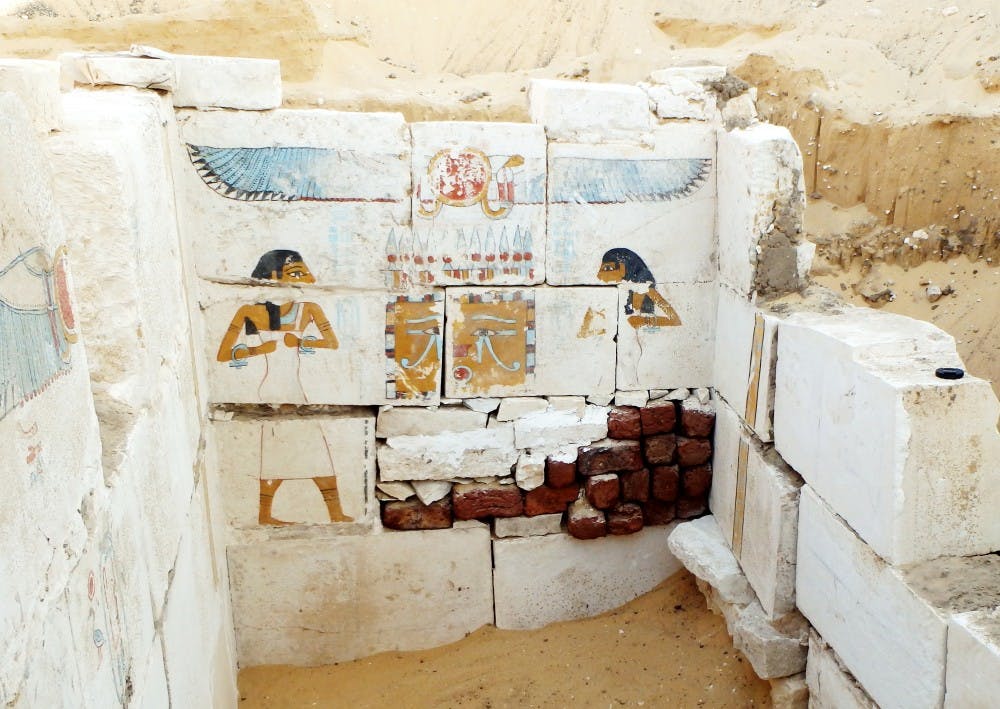Since graduate school, Josef Wegner has spent countless hours exploring the tombs of Abydos in the Egyptian desert. But upon excavating a previously buried tomb in January, Wegner and his team knew they had found something extraordinary.
Most tombs have unadorned walls, stripped of their decorations by ancient plunderers. In this tomb, the walls were decorated with intricate paintings of protective goddesses and the name of its ancient Egyptian occupant, Woseribre Senebkay.
Reading the name, Wegner, who is the associate curator in the Egyptian Section at the University of Pennsylvania Museum of Archaeology and Anthropology, was taken aback. In all his years studying Egyptology, he’d never heard of the tomb’s occupant.
“We were pretty puzzled for two days. It was a king’s name that didn’t appear anywhere else in history, so we didn’t know who he was at first,” Wegner said.
The inscriptions on the walls of Senebkay’s tomb connected the mysterious pharaoh to an unconfirmed dynasty of Egyptian kings called the Abydos dynasty, which was proposed by Egyptologist Kim Ryholt in 1997. Identifying Senebkay as the first or second king of the Abydos dynasty, Wegner and his team finally confirmed its existence.
Wegner shared his excitement over the discovery with the rest of “Team Dude” — a title coined by Near Eastern Languages and Civilizations professor Jennifer Houser Wegner, who is the only woman on the team and is married to Josef Wegner.
Penn graduate students Paul Verhelst and Matthew Olson, both of the Department of Near Eastern Languages and Civilizations, also noted that the King’s mummified remains, long since dismembered by tomb plunderers, were still inside the tomb. They identified King Senebkay as having died in his mid to late 40s.
“Not only do you have his name [on] the tomb, but you also have him there as well,” Olson said.
Related: Penn Museum live: saving mummies
Even 10-year-old Alexander Wegner, who has accompanied his parents on field research since infancy, was excited by the discovery. He helped to sort pottery at the dig site and was elated to spend time with pseudo-older brothers as part of “Team Dude.” Surprisingly, his mother enjoyed the otherwise male antics as well.
“Team Dude is earthy. And a little gross. But very enthusiastic!” Houser Wegner said.
The discovery of King Senebkay’s tomb and confirmation of the Abydos dynasty prove that in archaeology, no one can predict what might be hidden under layers of sand.
“Every time you go out, you have a slight prediction of what you think you’ll find, but it always turns out completely different,” Wegner said.



